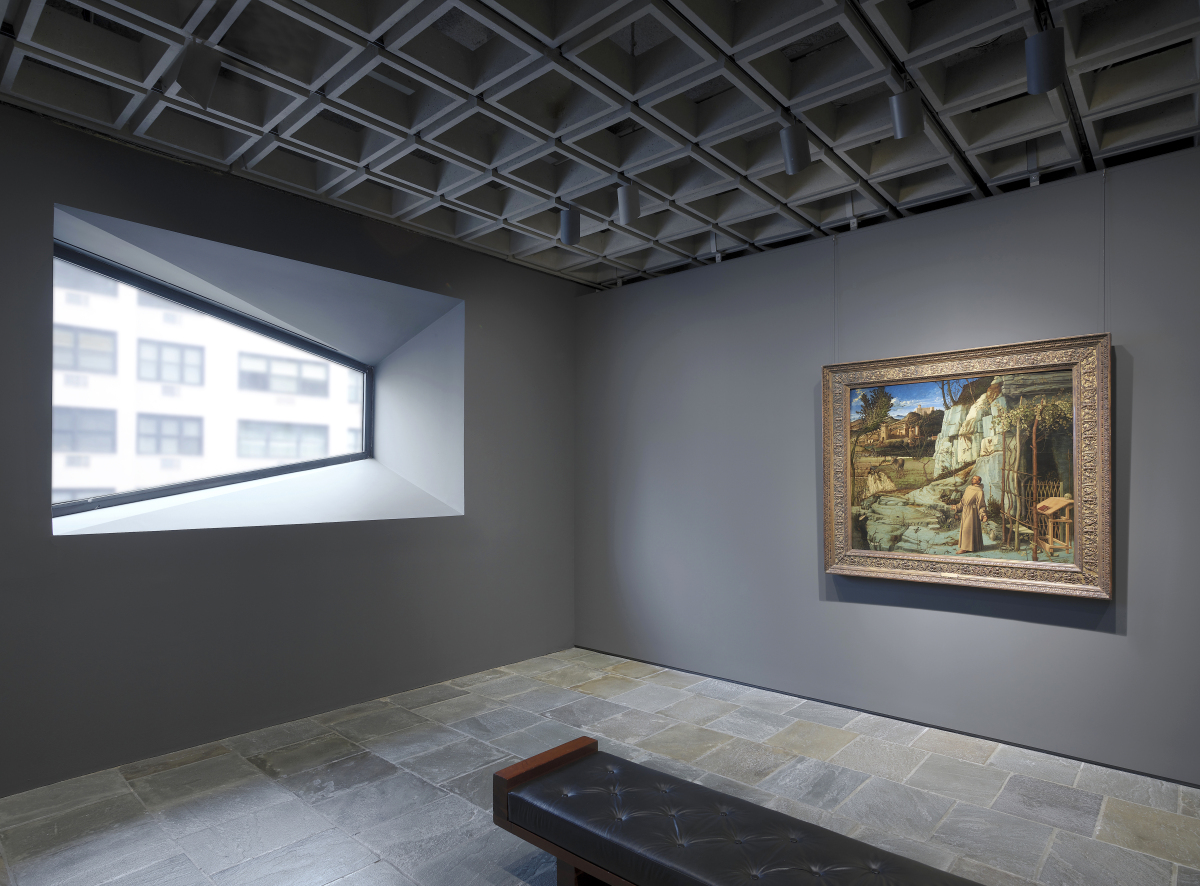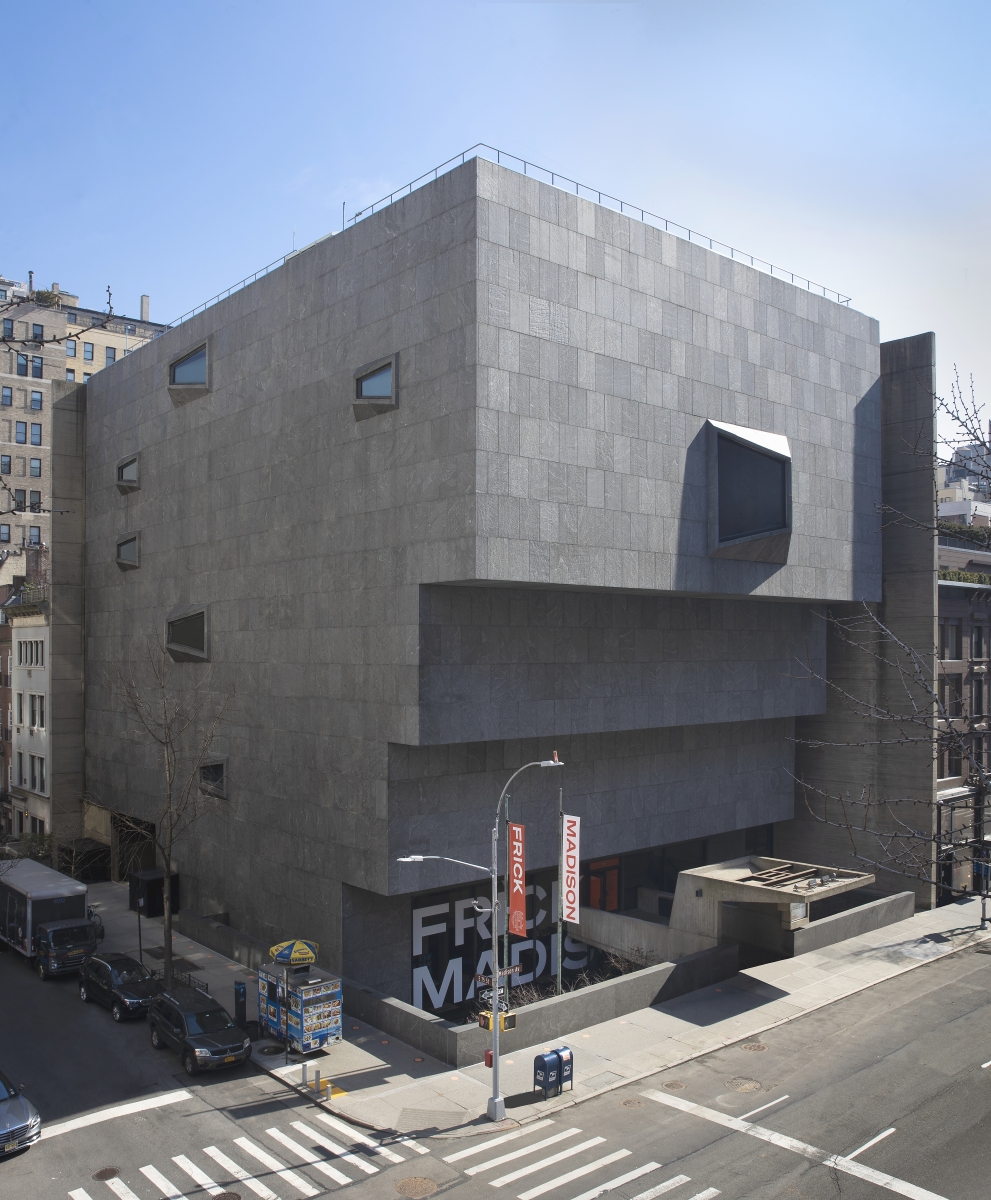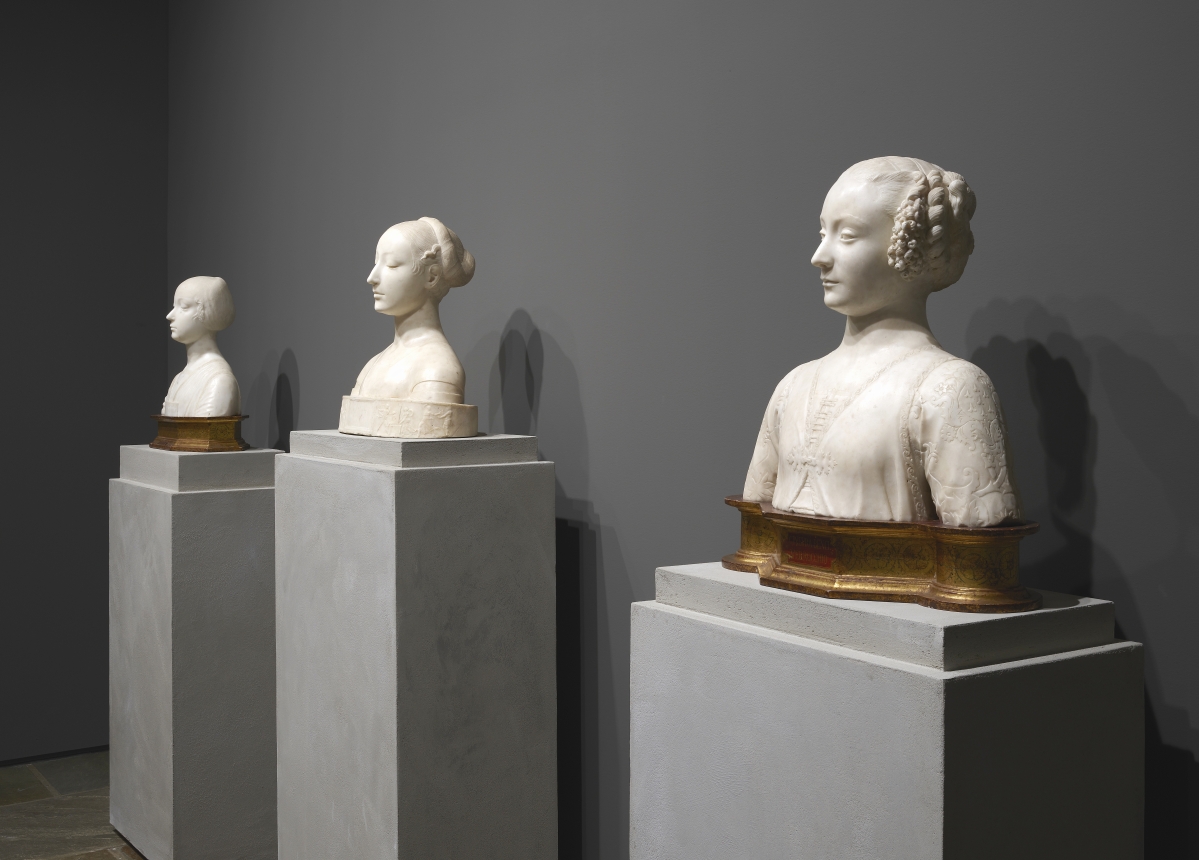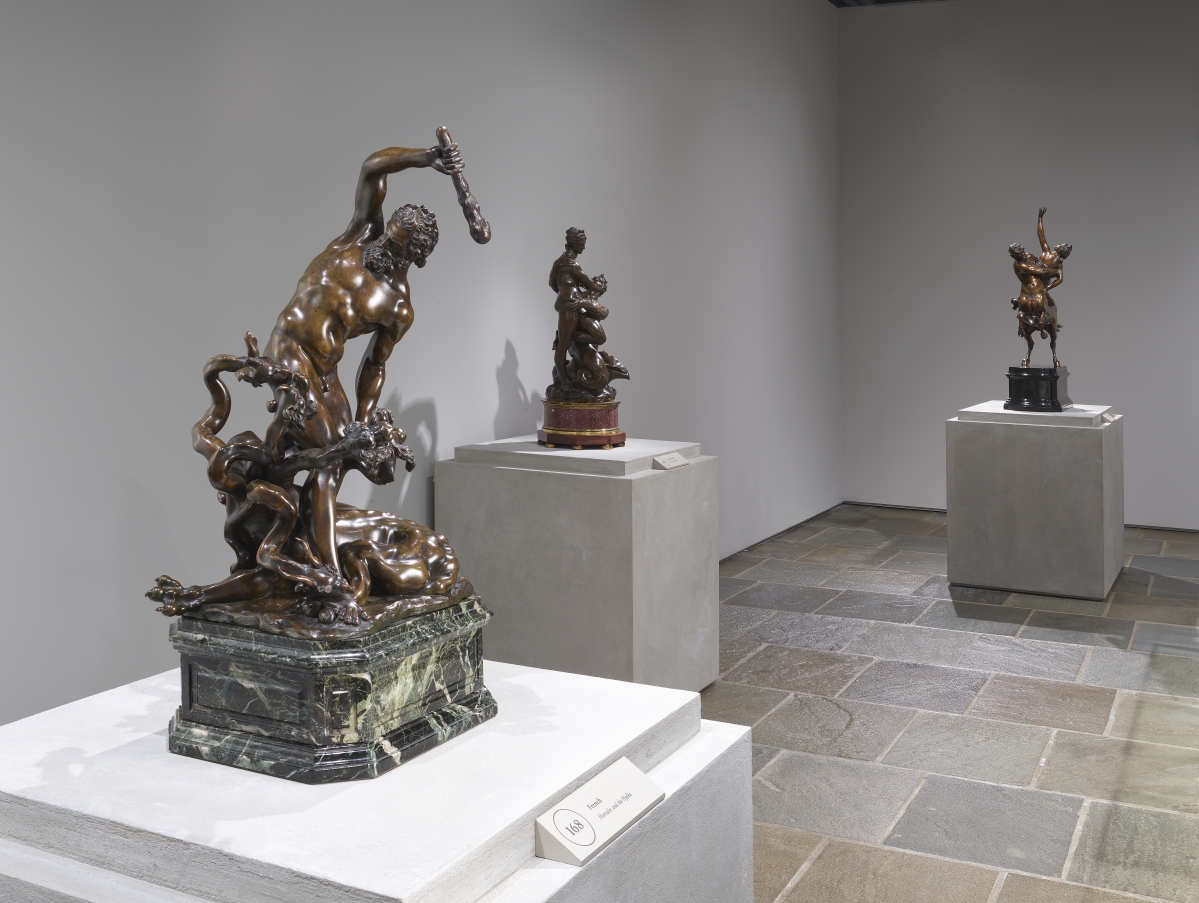
Bellini’s “St Francis in the Desert,” one of the Frick’s most important and loved works, is displayed in isolation, paired with one of the iconic trapezoidal windows Marcel Breuer conceived for the building.
By James D. Balestrieri, Photos by Joe Coscia
NEW YORK CITY – For all the times I have stood in front of Giovanni Bellini’s Fifteenth Century masterpiece “St Francis in the Desert” at the Frick Collection’s longtime home on 70th and Fifth Avenue, you would think I could resist the urge to take the painting off the wall, walk it outside, and see it bathed in sunlight. However, I also enjoy the sunlight and being able to walk around in it, as opposed to the jail cell I would invite were I to indulge my urge. Still, when Xavier Salomon, Frick deputy director and Peter J. Sharp chief curator, observed in a conversation that the Bellini is “all about light,” I felt that my unscratchable itch was not entirely without justification, especially after months of pandemic life that felt more than a little sunless. St Francis and his animal friends might enjoy taking the air.
The Frick Collection has been one of the few cultural beacons in a world of darkened movie and theatre marquees, silent concert halls, and museums without even the ghosts of footfalls. The viral success of “Cocktails with a Curator,” — how refreshing it is to use the adjective viral that way again instead of in its original, lethal meaning — the inauguration of the Frick’s Bloomberg Connects app, which puts the museum in the palm of your hand via smartphone, the move of the Frick Collection from the mansion to its temporary home in Marcel Breuer’s Brutalist fortress on Madison Avenue, and the beginning of the major restoration and expansion of the Frick mansion into a state-of-the-art, world class campus have fulfilled Salomon’s mission statement, that “the Frick should be at the forefront in happy and sad times.”
Covid-19 has caused the entire world — a phrase I use without hyperbole — to look forward and back, to the future and to the past, to look inward and outward, to find joy in the midst of rage, hope in the midst of fear, and community in the midst of solitude. Above all – and I hope I am right about this – the virus has made us look at the old normal not so that we may return to it, but to craft a new and better world. The Frick’s larger lesson and inspiration is that even when you are devoted to the objects, stories and beauties of the past, you cannot dwell in the past. You can work with what you are given to shape time or you can allow yourself to be shaped by it. “Art is relevant in a time of crisis,” Salomon asserted, offering insight into the choices we have made in the past and illuminating new, forgotten and neglected paths for us to follow.
In speaking with Salomon, I thought back to André Malraux’s 1953 book, The Voices of Silence, and meditated on the future of the museum, wondering whether musings in front of masterpieces might move online, displaced by eyes in front of screens. Malraux was only speaking of photography and art books when he wrote, a “‘Museum without Walls’ is coming into being, and (now that the plastic arts have invented their own printing press) it will carry infinitely farther that revelation of the world of art, limited perforce, which the ‘real’ museums offer us within their walls.” Yet Salomon sees the live and the virtual as more complementary than antagonistic, saying, “Virtual images of art will never be a substitute for witnessing the work of art. They will be parallel experiences. Some may think it is a substitute” but the “craving for being with others,” and the “huge response to the reopening” at Frick Madison suggests otherwise. Cocktails with a Curator, he went on, has extended the museum’s reach, eliciting responses from abroad like these: “As soon as possible, I want to come to New York to visit the Frick.”
The success of “Cocktails with a Curator,” envied and copied by institutions everywhere, was born out of what Salomon calls real “urgency,” off the “top of our heads” in conversations with others at the Frick. “What will people miss and want a substitute for,” we thought: “sharing Friday afternoon drinks and a meal. With no access to libraries, we did what we could from home with our research, our knowledge, to create these conversations.” Conversations led to conversations. Unscripted, intimate and relaxed, focused on a single object: a painting, a sculpture, a piece of porcelain, an ornate chest. “Cocktails” is “tell me a story” time for grownups, 15 or 20 minutes of purposeful, imaginative escape throwing spans from the past that become lifelines in the present.
Just as “Cocktails” helped relieve the isolation of lockdown for those of us at home, for Salomon and his colleagues, curator Aimee Ng, guest curator Giulio Dalvit, and former curator of decorative arts Charlotte Vignon, now director of the Musée National de Céramique in Sèvres, it was the “move to Frick Madison that got us through the pandemic.”

Frick Madison, located in the Breuer-designed former home of the Whitney Museum of American Art, is the temporary new home of The Frick Collection during its renovation.
When I asked Salomon about the challenges of presenting the Frick Collection’s old masters in a stark modernist space like the Breuer, he countered that the mansion “also has its challenges,” and that “some find the grand upper East Side architecture off-putting, while others find it wonderful” and that “neither the mansion nor the Breuer make everyone happy.”
Installation, as Salomon rightly asserts, is always an “exercise in translating. You have to embrace the building.”
The interesting thing about the Breuer is that, for all its modernity, it also resembles an abstraction of a castle, the kind you find in Europe housing an eclectic collection of old masters and collections of collections – of porcelain, medals, carpets and other decorative arts objects – a collection, in short, not unlike the Frick’s. Salomon and I talked about the “stronghold” aesthetic of the building – something against which I always felt the Met Breuer was waging a losing battle – and he said he thought of the spaces in a castle, “the drawbridge, the great halls and passages,” and attempted to find ways to work with them. The translation from Beaux-Arts and brocade to Brutalism and ballistas compels the viewer – whether to Frick Madison or to the website or app – to consider the artworks and objects in greater isolation, without the countervailing feeling that they are part of a domestic decorative scheme.
Meanwhile – and there is a sense that events at the Frick have unfolded over the past year in acts, like a play or film – the design of the renovation, restoration and expansion of Frick 5th Avenue underwent changes in response to a variety of concerns and construction began in earnest.
Designed by Selldorf Architects in collaboration with the Frick, the “new old” Frick will have a dedicated special exhibition space, an auditorium with the technology to broadcast concerts and lectures, educational spaces, new conservation studios, upgraded climate control and accessibility and, for the first time, the second floor of the mansion will be open to the public, displaying works that have rarely, if ever, been on view. Some areas of the museum will be entirely new while others will be restored with “original fabrics in the galleries, made by the companies that made them for Frick,” and will be “respectful of what was there” then. Some elements from Frick Madison may continue once the move back to the mansion takes place. The enamels rooms, for example, will be “restored as per Frick Madison,” while the ceramics will go back to where they were.”

The third-floor galleries at Frick Madison begin with three rare marble examples of Italian Renaissance portrait sculpture. By Laurana and Verrocchio, they date to the 1470s. The next room features early Italian religious painting from the Frick Collection, including works by Paolo Veneziano and Piero della Francesca.
All well and good, but the Bellini was still on my mind. Who thought of hanging it by itself bathed in the light of Marcel Breuer’s trapezoidal window? “My first thought,” Salomon said, was “What are we going to pair with the wonderful windows in the Breuer?” And because the Bellini is “all about light, I wanted to pair it with a source of light.” Salomon used the idea of the “secular modern chapel,” in particular the Rothko Chapel in Houston, as inspiration.
The experience of the Bellini, by itself in its own gallery, is meditative, spiritual and restorative, forcing the focus on the single work: we appreciate it as we appreciate the single object in “Cocktails with a Curator.” Standing in front of the Bellini in the Frick Madison allows the work to speak to us directly, without explanation if we so choose, calling memories, rhythms, silences. The “Bellini is about relations between man and nature, as is the virus,” Salomon says, which is why he chose it for the first episode of “Cocktails,” but it is also about man in nature and against, man exploiting nature, coming to terms with nature, living in and with nature, nature fighting back. St Francis’s famous “Canticle of the Sun” is, after all, a prayer, a wish, a hope – not a reality. As it is displayed, I was reminded of moments in Europe – Wales in particular – when I would find myself in some small village, having a coffee or a dark pint of chwerw, and I’d hear about an artwork in a chapel – a rood screen or a Crusader’s effigy in stone – and I’d walk down a lane and into a cool, dark world damp with history, and find myself alone with a relic that spoke to artistry, adventure, folly, faith. I would learn the story or make one up where there wasn’t one because, as Salomon insists, “For every exhibition, there has to be a story.”
Illumination steps in where light falters. The vision of St Francis is Bellini’s vision; Bellini’s vision is Salomon’s and the Frick’s.
Sometimes, the storyteller is the story.




















